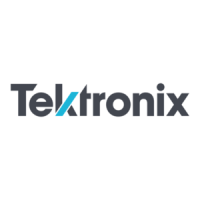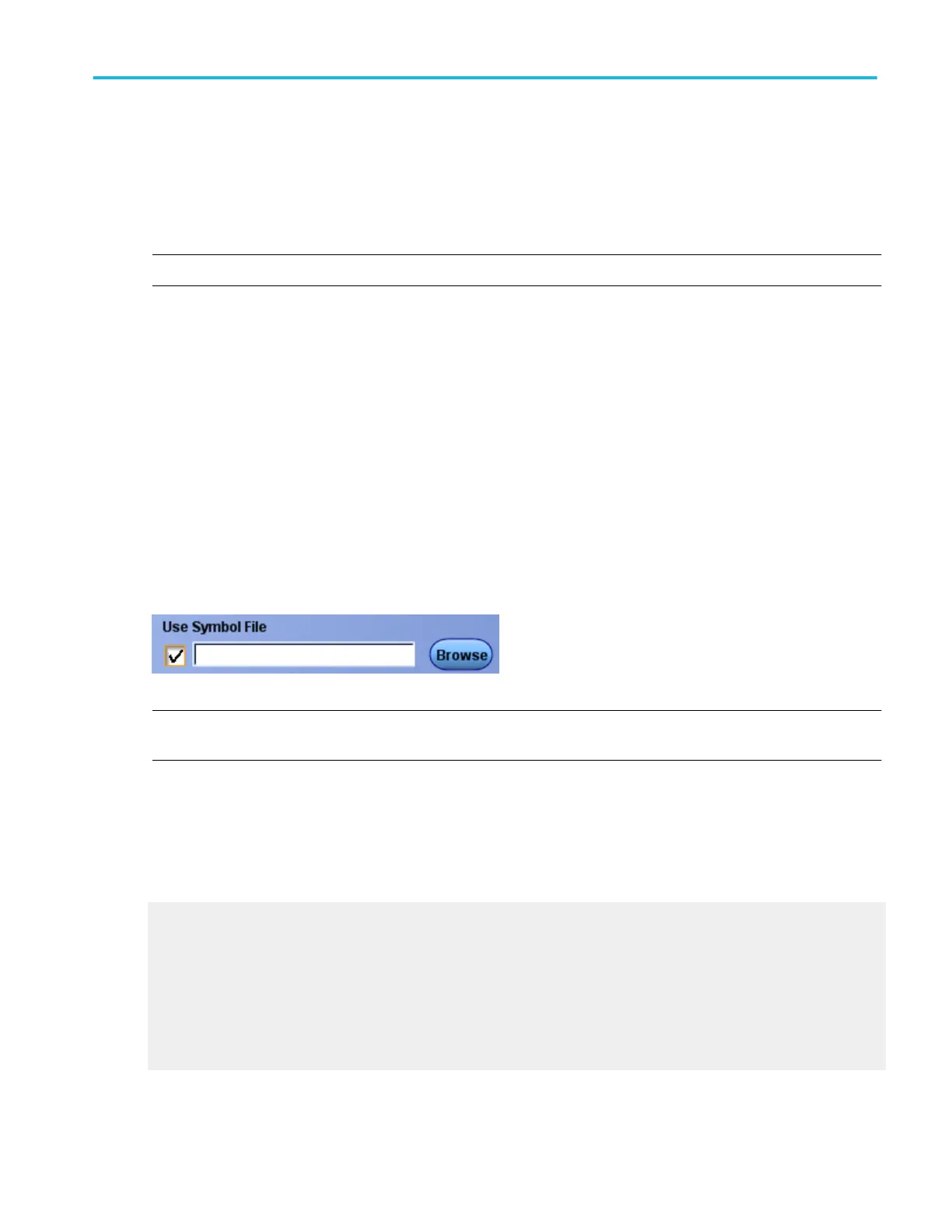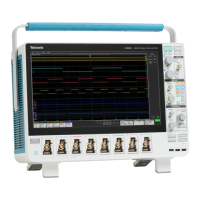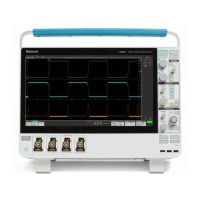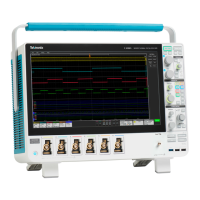RS-232 decoding displays a stream of bytes. You can organize the stream into packets with an end-of-packet character.
Select the bus symbol table
NOTE. Symbol tables are only available when a parallel bus is selected.
Symbol files are files of alphanumeric symbol names and associated data values, and are used to map a group value to a text
string. The instrument displays the symbol in place of the numeric value. For example, a symbol file could map an address group
value to a specific bus cycle. This decoding makes it easier to recognize and locate specific numeric values on the bus.
Symbol files must follow a specific format to be compatible with the file reader of the instrument.
From the Bus Setup window, select the Configure tab.
To use
■
Scroll through the Bus list <B1-B16> and select the bus to configure.
■
Select the Display tab.
■
Click the Use Symbol File check box.
■
Click the Browse button to locate the file.
NOTE. The instrument looks for decode symbol table files in the C:\Users\[Username]\Tektronix\TekScope\BusDecodeTables
directory.
Behavior
The instrument searches for the numeric value in the symbol table file and displays the corresponding symbol. For example, you
might define a numeric value to display as RESET. If the instrument does not find a symbol assigned to a numeric value, the
numeric value displays.
What do you want to do next?
Learn about the symbol file format.
Learn how to find and open a symbol table file.
See an example of parallel bus values displayed as symbols
Learn more about bus setups.
Learn about bus configuration.
Learn about digital setups.
Bus setups
DPO70000SX, MSO/DPO70000DX, MSO/DPO70000C, DPO7000C, and MSO/DPO5000B Series 159
